Related Research Articles

Aquaculture, also known as aquafarming, is the controlled cultivation ("farming") of aquatic organisms such as fish, crustaceans, mollusks, algae and other organisms of value such as aquatic plants. Aquaculture involves cultivating freshwater, brackish water, and saltwater populations under controlled or semi-natural and can be contrasted with commercial fishing, which is the harvesting of wild fish. Aquaculture is also a practice used for restoring and rehabilitating marine and freshwater ecosystems. Mariculture, commonly known as marine farming, is aquaculture in seawater habitats and lagoons, as opposed to freshwater aquaculture. Pisciculture is a type of aquaculture that consists of fish farming to obtain fish products as food.

Mariculture, sometimes called marine farming or marine aquaculture, is a branch of aquaculture involving the cultivation of marine organisms for food and other animal products, in seawater. Subsets of it include, fish farms built on littoral waters, or in artificial tanks, ponds or raceways which are filled with seawater. An example of the latter is the farming of plankton and seaweed, shellfish like shrimp or oysters, and marine finfish, in saltwater ponds. Non-food products produced by mariculture include: fish meal, nutrient agar, jewellery, and cosmetics.

FishBase is a global species database of fish species. It is the largest and most extensively accessed online database on adult finfish on the web. Over time it has "evolved into a dynamic and versatile ecological tool" that is widely cited in scholarly publications.

Fishery can mean either the enterprise of raising or harvesting fish and other aquatic life or, more commonly, the site where such enterprise takes place. Commercial fisheries include wild fisheries and fish farms, both in freshwater waterbodies and the oceans. About 500 million people worldwide are economically dependent on fisheries. 171 million tonnes of fish were produced in 2016, but overfishing is an increasing problem, causing declines in some populations.

Overfishing is the removal of a species of fish from a body of water at a rate greater than that the species can replenish its population naturally, resulting in the species becoming increasingly underpopulated in that area. Overfishing can occur in water bodies of any sizes, such as ponds, wetlands, rivers, lakes or oceans, and can result in resource depletion, reduced biological growth rates and low biomass levels. Sustained overfishing can lead to critical depensation, where the fish population is no longer able to sustain itself. Some forms of overfishing, such as the overfishing of sharks, has led to the upset of entire marine ecosystems. Types of overfishing include growth overfishing, recruitment overfishing, and ecosystem overfishing.

A conventional idea of a sustainable fishery is that it is one that is harvested at a sustainable rate, where the fish population does not decline over time because of fishing practices. Sustainability in fisheries combines theoretical disciplines, such as the population dynamics of fisheries, with practical strategies, such as avoiding overfishing through techniques such as individual fishing quotas, curtailing destructive and illegal fishing practices by lobbying for appropriate law and policy, setting up protected areas, restoring collapsed fisheries, incorporating all externalities involved in harvesting marine ecosystems into fishery economics, educating stakeholders and the wider public, and developing independent certification programs.
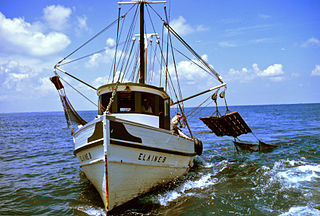
The fishing industry includes any industry or activity that takes, cultures, processes, preserves, stores, transports, markets or sells fish or fish products. It is defined by the Food and Agriculture Organization as including recreational, subsistence and commercial fishing, as well as the related harvesting, processing, and marketing sectors. The commercial activity is aimed at the delivery of fish and other seafood products for human consumption or as input factors in other industrial processes. The livelihood of over 500 million people in developing countries depends directly or indirectly on fisheries and aquaculture.

The goal of fisheries management is to produce sustainable biological, environmental and socioeconomic benefits from renewable aquatic resources. Wild fisheries are classified as renewable when the organisms of interest produce an annual biological surplus that with judicious management can be harvested without reducing future productivity. Fishery management employs activities that protect fishery resources so sustainable exploitation is possible, drawing on fisheries science and possibly including the precautionary principle.
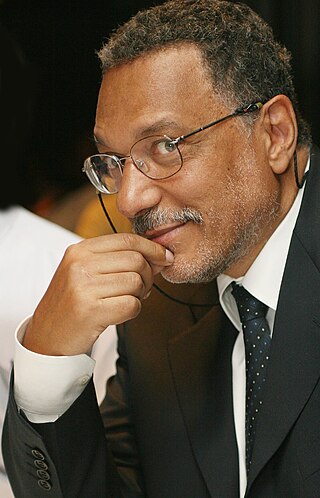
Daniel Pauly is a French-born marine biologist, well known for his work in studying human impacts on global fisheries and in 2020 was the most cited fisheries scientist in the world. He is a professor and the project leader of the Sea Around Us initiative at the Institute for the Oceans and Fisheries at the University of British Columbia. He also served as Director of the UBC Fisheries Centre from November 2003 to October 2008.
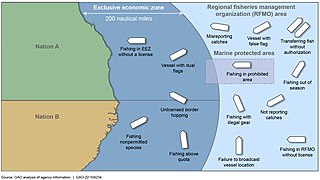
Illegal, unreported and unregulated fishing (IUU) is an issue around the world. Fishing industry observers believe IUU occurs in most fisheries, and accounts for up to 30% of total catches in some important fisheries.

The environmental impact of fishing includes issues such as the availability of fish, overfishing, fisheries, and fisheries management; as well as the impact of industrial fishing on other elements of the environment, such as bycatch. These issues are part of marine conservation, and are addressed in fisheries science programs. According to a 2019 FAO report, global production of fish, crustaceans, molluscs and other aquatic animals has continued to grow and reached 172.6 million tonnes in 2017, with an increase of 4.1 percent compared with 2016. There is a growing gap between the supply of fish and demand, due in part to world population growth.

The trophic level of an organism is the position it occupies in a food web. Within a food web, a food chain is a succession of organisms that eat other organisms and may, in turn, be eaten themselves. The trophic level of an organism is the number of steps it is from the start of the chain. A food web starts at trophic level 1 with primary producers such as plants, can move to herbivores at level 2, carnivores at level 3 or higher, and typically finish with apex predators at level 4 or 5. The path along the chain can form either a one-way flow or a part of a wider food "web". Ecological communities with higher biodiversity form more complex trophic paths.

China has one-fifth of the world's population and accounts for one-third of the world's reported fish production as well as two-thirds of the world's reported aquaculture production. It is also a major importer of seafood and the country's seafood market is estimated to grow to a market size worth US$53.5 Billion by 2027.

China, with one-fifth of the world's population, accounts for two-thirds of the world's reported aquaculture production.
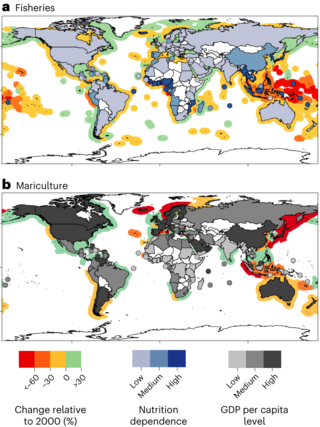
Fisheries are affected by climate change in many ways: marine aquatic ecosystems are being affected by rising ocean temperatures, ocean acidification and ocean deoxygenation, while freshwater ecosystems are being impacted by changes in water temperature, water flow, and fish habitat loss. These effects vary in the context of each fishery. Climate change is modifying fish distributions and the productivity of marine and freshwater species. Climate change is expected to lead to significant changes in the availability and trade of fish products. The geopolitical and economic consequences will be significant, especially for the countries most dependent on the sector. The biggest decreases in maximum catch potential can be expected in the tropics, mostly in the South Pacific regions.

Fishing down the food web is the process whereby fisheries in a given ecosystem, "having depleted the large predatory fish on top of the food web, turn to increasingly smaller species, finally ending up with previously spurned small fish and invertebrates".
SeaLifeBase is a global online database of information about marine life. It aims to provide key information on the taxonomy, distribution and ecology of all marine species in the world apart from finfish. SeaLifeBase is in partnership with the WorldFish Center in Malaysia and the UBC Institute for the Oceans and Fisheries at the University of British Columbia. Daniel Pauly is the principal investigator and it is coordinated by Maria Lourdes D. Palomares. As of March 2023, it included descriptions of 85,000 species, 59,400 common names, 15,500 pictures, and references to 39,300 works in the scientific literature. SeaLifeBase complements FishBase, which provides parallel information for finfish.
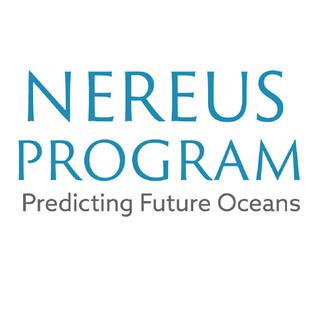
The Nereus Program is a global interdisciplinary initiative between the Nippon Foundation and the University of British Columbia that was created to further our knowledge of how best to attain sustainability for our world’s oceans. In addition to the Nippon Foundation and UBC, the program partners with University of Cambridge, Duke University, Princeton University, Stockholm University, United Nations Environment Program-World Conservation Monitoring Centre and Utrecht University. The program is built around three core objectives: to conduct collaborative ocean research across the natural and social sciences, to develop an interdisciplinary network of experts that can engage in discussion of complex and multifaceted questions of ocean sustainability, and to transfer these ideas to practical solutions in global policy forums.

William Cheung is a marine biologist, well known for his research on the impacts of climate change on marine ecosystems and fisheries. He currently works as director of science of the Nereus Program and is also an associate professor at the University of British Columbia, as well as Leader at the UBC Changing Ocean Research Unit.
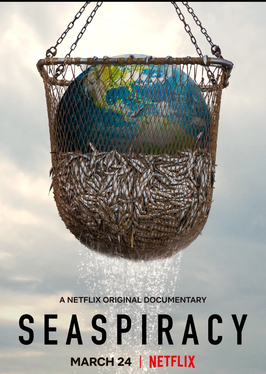
Seaspiracy is a 2021 documentary film about the environmental impact of fishing directed by and starring Ali Tabrizi, a British filmmaker. The film examines human impacts on marine life and advocates for ending fish consumption.
References
- 1 2 Zeller, D.; Palomares, M. L. D.; Tavakolie, A.; Ang, M.; Belhabib, D.; Cheung, W. W. L.; Lam, V. W. Y.; Sy, E.; Tsui, G. (2016). "Still catching attention: Sea Around Us reconstructed global catch data, their spatial expression and public accessibility". Marine Policy. 70: 145–152. doi: 10.1016/j.marpol.2016.04.046 . ISSN 0308-597X.
- ↑ Pauly, Daniel (2007). "The Sea Around Us Project: Documenting and Communicating Global Fisheries Impacts on Marine Ecosystems". Ambio: A Journal of the Human Environment. 36 (4): 290–295. doi:10.1579/0044-7447(2007)36[290:TSAUPD]2.0.CO;2. ISSN 0044-7447. PMID 17626465. S2CID 8422371.
- ↑ Watson, R., L. Pang and D. Pauly. 2001. The marine fisheries of China: development and reported catches. Fisheries Centre Research Report. 9(2), 50 p.
- ↑ Pauly, D; Sea Around Us (2009). Fishing and Aquaculture, p. 69 In: Visual Atlas of the World. Washington, D.C.: National Geographic. p. 69. ISBN 978-1426218385.
- ↑ Pauly, Daniel; Christensen, Villy; Guénette, Sylvie; Pitcher, Tony J.; Sumaila, U. Rashid; Walters, Carl J.; Watson, R.; Zeller, Dirk (2002). "Towards sustainability in world fisheries". Nature. 418 (6898): 689–695. Bibcode:2002Natur.418..689P. doi:10.1038/nature01017. ISSN 0028-0836. PMID 12167876. S2CID 2299135.
- ↑ Cashion, Tim; Manach, Frédéric Le; Zeller, Dirk; Pauly, Daniel (2017). "Most fish destined for fishmeal production are food-grade fish". Fish and Fisheries. 18 (5): 837–844. doi:10.1111/faf.12209. ISSN 1467-2979. S2CID 90572626.
- ↑ Pauly, Daniel; Alder, Jackie; Bennett, Elena; Christensen, Villy; Tyedmers, Peter; Watson, Reg (2003-11-21). "The Future for Fisheries". Science. 302 (5649): 1359–1361. doi:10.1126/science.1088667. ISSN 0036-8075. PMID 14631031. S2CID 35026762.
- ↑ Palomares, M.L.D. and D. Pauly. 2018. What and how much have we caught? p. 60-61 In: M. Grooten and R.E.A. Almond (Editors). Living Planet Report – 2018: Aiming Higher. WWF, Gland, Switzerland. ISBN 978-2-940529-90-2
- ↑ Pauly, Daniel; Zeller, Dirk (2016). "Catch reconstructions reveal that global marine fisheries catches are higher than reported and declining". Nature Communications. 7 (1): 10244. Bibcode:2016NatCo...710244P. doi:10.1038/ncomms10244. ISSN 2041-1723. PMC 4735634 . PMID 26784963.
- ↑ Pauly, Daniel (2016-10-06). Global atlas of marine fisheries: a critical appraisal of catches and ecosystem impacts. Pauly, D. (Daniel), Zeller, Dirk, 1961-. Washington, D.C. ISBN 9781610916264. OCLC 969053869.
{{cite book}}: CS1 maint: location missing publisher (link) - ↑ Pauly, D. R. Watson and D. Zeller. 2012. Where fisheries have been, and why they are going. Chapter 4, p. 15-26 In: K. Soeters (ed.) Sea the Truth: Essays on Overfishing, Pollution and Climate Change. Nicolaas G. Pierson Foundation, Amsterdam.
- ↑ Pauly, Daniel; Tyedmers, Peter; Watson, Reg; Teh, Louise; Sumaila, Ussif Rashid (2008-09-01). "Fuel price increase, subsidies, overcapacity, and resource sustainability". ICES Journal of Marine Science. 65 (6): 832–840. doi: 10.1093/icesjms/fsn070 . ISSN 1054-3139.
- ↑ Cullis-Suzuki, Sarika; Pauly, Daniel (2010-03-03). "Marine Protected Area Costs as "Beneficial" Fisheries Subsidies: A Global Evaluation". Coastal Management. 38 (2): 113–121. Bibcode:2010CoasM..38..113C. doi:10.1080/08920751003633086. ISSN 0892-0753. S2CID 154873610.
- ↑ Alder, Jacqueline; Campbell, Brooke; Karpouzi, Vasiliki; Kaschner, Kristin; Pauly, Daniel (2008). "Forage Fish: From Ecosystems to Markets". Annual Review of Environment and Resources. 33 (1): 153–166. doi: 10.1146/annurev.environ.33.020807.143204 . ISSN 1543-5938. S2CID 15676801.
- ↑ Jacquet, Jennifer; Pauly, Daniel (2008). "Funding Priorities: Big Barriers to Small-Scale Fisheries". Conservation Biology. 22 (4): 832–835. doi:10.1111/j.1523-1739.2008.00978.x. ISSN 1523-1739. PMID 18637910. S2CID 18653469.
- ↑ Tickler, David; Meeuwig, Jessica J.; Bryant, Katharine; David, Fiona; Forrest, John A. H.; Gordon, Elise; Larsen, Jacqueline Joudo; Oh, Beverly; Pauly, Daniel (December 2018). "Modern slavery and the race to fish". Nature Communications. 9 (1): 4643. Bibcode:2018NatCo...9.4643T. doi:10.1038/s41467-018-07118-9. ISSN 2041-1723. PMC 6220235 . PMID 30405109.

